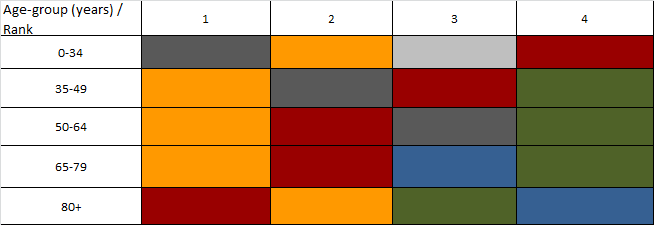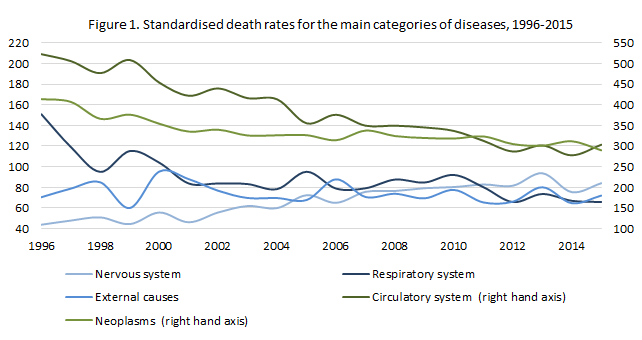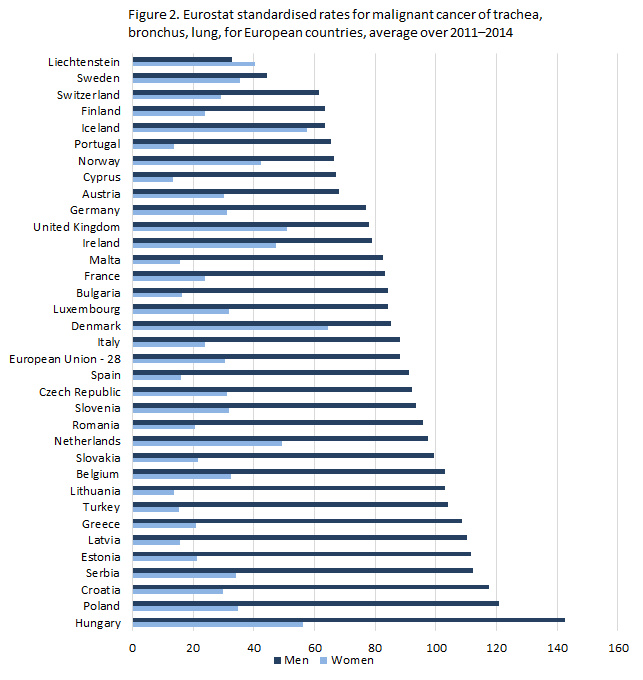Statistics Iceland has published new data on causes of death, for the period 2010-2015. The data are based on the classification of death certificates of all persons who died during this period with a legal domicile in Iceland.
Decline in deaths by circulatory diseases
The main causes of death in Iceland in 2006-2015 were diseases of the circulatory system (34%), a significant decline from the period 1996-2005 (40%). When looking at different age groups the leading causes of death were external in the youngest age group, between 0-34 years of age, neoplasm for persons between 35 and 79 years of age, and circulatory system diseases for persons 80 years of age or older.
Nearly 80% of all deaths are in the age group 65 years and older, with 47% of all deaths occurring for persons over the age of 80. These trends have increased the number of deaths caused by diseases that are more likely to affect older age groups. For example, diseases of the nervous system were the third most common cause of death during 2006-2015, with more than 8% deaths.
The rate of deaths due to neoplasms, diseases of the respiratory system and external causes has not changed much from the period 1996-2005. In the years 2006-2015, 29% of the total causes of deaths were due to neoplasm, 8% due to diseases of the respiratory system and 6% because of external causes, which is the most common cause of death for younger persons.
The percentage of avoidable deaths, defined as causes of death that can be avoided by changing lifestyles or health policies, has decreased from 9% in 1996-2005 to 7% in 2006-2015.
Main categories of causes of death by sex and age
The leading cause of death between the ages of 35 and 79 is neoplasm. For the age group from 0 to 34 external causes are the most likely and for the oldest group (80 years or older) the leading causes of death are circulatory diseases.
Table 1: Leading causes of death by age, 2006-2015

Notes: The colours correspond to the main categories of diseases red=of circulatory system, yellow= neoplasms, blue=of respiratory system, green=of nervous system, dark grey=external causes and light grey=other diseases.
Percentage of deaths due to diseases of the circulatory system is similar for men and women over 80 years old (about 43%), while the percentages of men is more than twofold in the age-group 50-64 years (27% versus 12%). On the other hand, neoplasm percentages are higher for women than men, especially in the age groups 50-64 years (60% versus 43%) and 35-49 years (54% versus 40%). External causes of death are much more common for men (54%) aged 35-49 years than for women (23%).
Time evolution of standardised rates
The total numbers and the percentages for each cause of death depend on the age structure of the population. In order to study the time evolution for each country and to be able to do a cross-country comparison, statistical offices use standardised death rates (per 100,000 inhabitants of the Eurostat-2013 standard population). For Iceland, the time evolution of rates is given in Figure 1 for the past 20 years.

Notes: vertical axes display the rates per 100,000 inhabitants, using Eurostat-2013 standard population, right hand side axis for circulatory system and neoplasms; left hand side vertical axis for nervous, respiratory system and external causes.
The standardised rates for circulatory diseases and neoplasms have declined at unequal speeds during the past 20 years (see Figure 1). Lung cancer represents about a quarter of all death-causing neoplasms in Iceland. Its rates are similar for men and women and have decreased rapidly in the last five years, faster for men than for women. This is in contrast to the European Union countries where, according to Eurostat , men are almost three times more likely to die from lung cancer than women, as shown in figure 2, according to recent Eurostat data.

The standardised rates of diseases of the nervous system have increased in Iceland, as well as in the rest of Europe due to population aging.